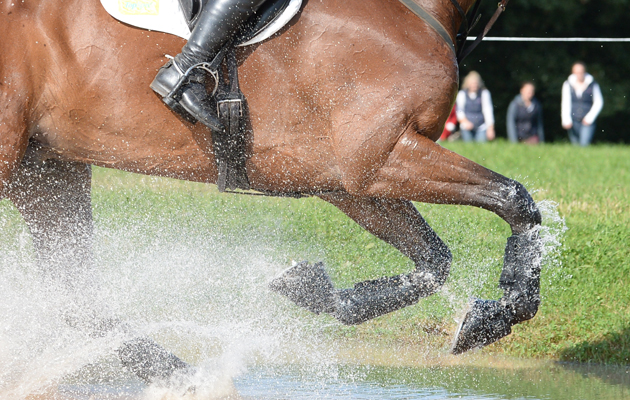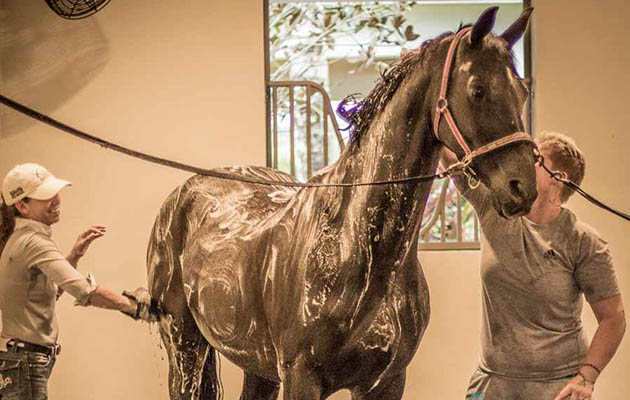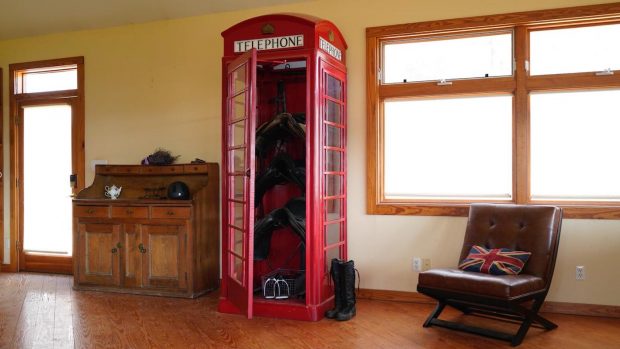A top dressage horse who was facing the threat of death or deportation after he failed tests for glanders has been released from quarantine as it has been proved the test results were false.
Sagacious HF was returning to the US after a successful European tour under rider Chase Hickok when he was held, having returned a false positive test for the disease while in quarantine in Miami.
The 18-year-old gelding has a glittering international record on both sides of the Atlantic.
He won team gold and individual silver at the 2007 Pan-Am Games under previous rider Lauren Sammis and he has been competing internationally for 11 years.
His most recent international start was in the Nations Cup at Hickstead last month, where he finished second in the grand prix and third in the special, helping the team to a bronze medal.
Earlier that month, the combination also competed on the US Nations Cup team at Falsterbo in Sweden, where they finished fourth in the grand prix, second in the freestyle and fourth as a team.
Chase was on her way to collect the horse from quarantine when she was told that he had tested positive for the disease.
In order for a horse to be allowed out of quarantine, it must test negative for a number of diseases, including glanders.
The other options would be to return him to the country he flew in from, in this case Amsterdam, or euthanasia.
Owner Al Guden quickly enlisted the help of lawyer Chapman Hopkins, who has recently dealt with a similar case involving a racehorse.
Article continues below…
You might also be interested in:

Isabell Werth scoops incredible triple gold in Gothenburg
Isabell Werth claims her third gold of the

Struggling to work your horse correctly over his topline? 4 exercises to help
Having your horse in an outline is a

‘Remember you’re dealing with an unpredictable animal’ — how top riders cope when things go wrong
Glanders is a serious bacterial infection that has been largely wiped out, but reappeared in Brazil around 15 years ago. The last reported case in the UK was in 1928 and it is not present in the US.
Glanders causes nodules and ulcers in the respiratory tract and spreads through contaminated feed, water, skin lesions, coughing and sneezing, aerosol emissions or via shared tack. The disease can also be passed to humans.
The complement fixation test (CFT) is the standard test used by the US Department of Agriculture (USDA) to establish the presence of glanders.
The horse tested positive in two CFT tests, but was showing no signs of illness or infection.
On 11 August, he was tested using an alternative system — the Western blot method — which came back negative. However, the horse needed to return negative tests via both methods in order to be released.
On 23 August, the horse tested negative for glanders in both CFT and Western blot tests and was allowed to return home.
Mr Guden told H&H he is very relieved.
“He is doing fine,” said Mr Guden, adding Sagacious is a “horse in a lifetime”.
“[When he was released from quarantine] he looked like his groom had just finished with him — he looked beautiful.”
Both Mr Guden and Chase have called for the process to be reviewed to help others avoid finding themselves in a similar situation.
H&H has contacted the USDA for comment.
For all the latest news analysis, competition reports, interviews, features and much more, don’t miss Horse & Hound magazine, on sale every Thursday




